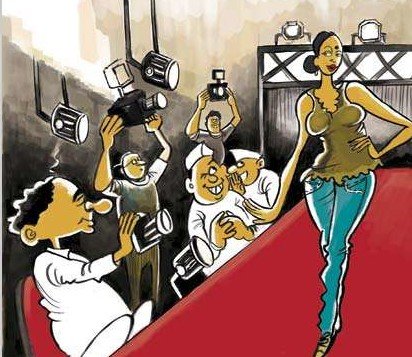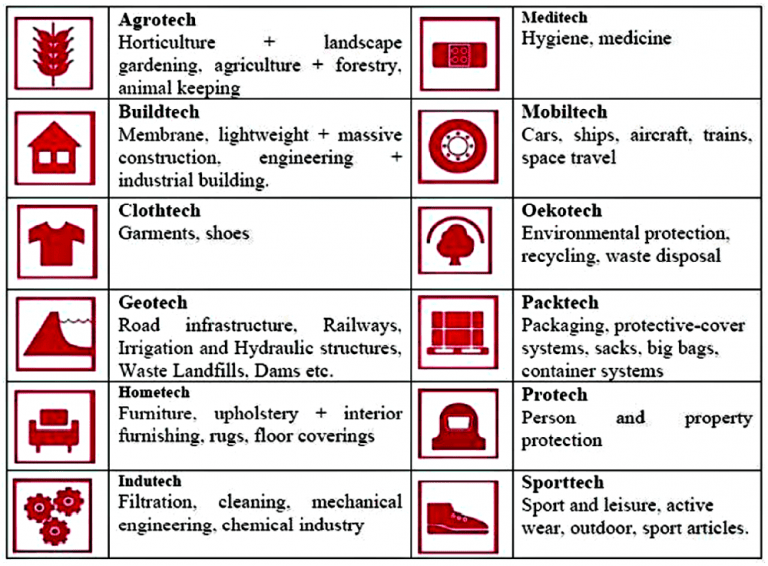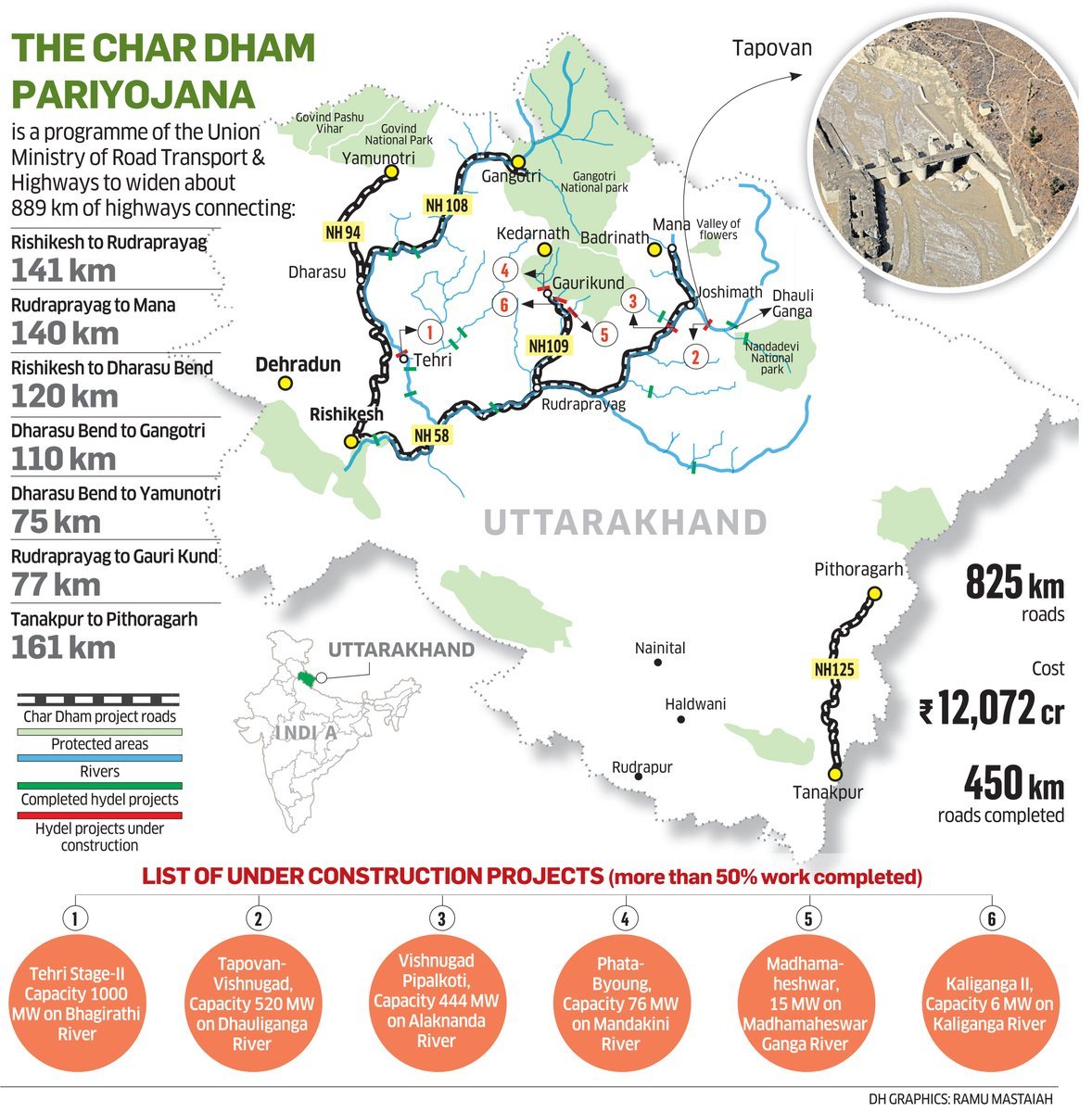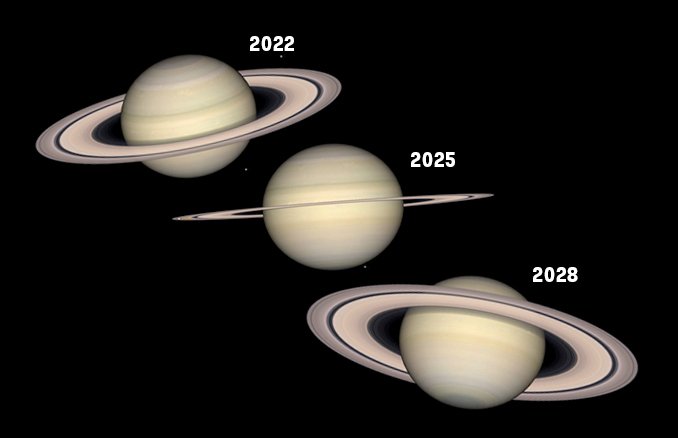
Current Affairs November 08, 2023: Telecom Service Providers (TSPs) vs. OTT, Deepfakes & Urgent Need for Regulation, Lab Grown Diamonds, CAR-T
Subscribers of "Current Affairs" course can Download Daily Current Affairs in PDF/DOC
Subscribe to Never Miss an Important Update! Assured Discounts on New Products!
Must Join PMF IAS Telegram Channel & PMF IAS History Telegram Channel
{GS1 – Geo – EG – Industrial Location} Lab Grown Diamonds (LGD)
- Context (IE): As per a recent study, the global lab-grown diamond industry is anticipated to generate $55.6 billion by 2031, witnessing a compound annual growth rate (CAGR) of 9.8% from 2022-31.
- Lab-grown diamonds (synthetic diamonds) are artificially manufactured using processes that duplicate the conditions under which diamonds naturally develop (high pressure and temperature).
- They consist of actual carbon atoms arranged in the characteristic diamond crystal structure.
- They exhibit the same optical and chemical properties as natural diamonds.
- They are graded using the same 4Cs as natural diamonds, i.e., Cut, Color, Carat, and Clarity.
- The lab-grown diamond jewellery market is expected to rapidly rise to $5 billion by 2025 and exceed $15 billion by 2035.
- In India, the share of lab-grown diamonds in the diamond business is only 2-3 per cent.
- They are mostly used for jewellery and exports.
- About 80% of the cut and polished LGDs are exported, while only 20% are consumed locally.
- India produces ~25% of global LGDs and is the largest producer of LGD through CVD technology.
- GoI has abolished Customs duty on imports of seeds used for manufacturing rough LGDs.
- India has also announced the establishment of the India Centre for LGDs at IIT Madras.
Method of Production of LGDs
| Chemical Vapor Deposition (CVD) Method | High-Pressure High-Temperature Method |
|
|
Growth Drivers of Lab-Grown Diamonds
- Increased demand for fashionable diamond jewellery.
- Use of LGDs by companies as a cost-effective alternative to naturally mined diamonds.
- Greater adoption of lab-grown diamonds by the jewellery and fashion jewellery industry.
- Depletion in deposits of natural diamonds.
- Reduction in the cost of production by 90% in the last decade due to technological advancement.
Benefits of Lab-Grown Diamonds
- Greater purity and improved quality.
- Guaranteed origins and guilt-free composition.
- Affordable diamonds in various colours.
- Environmentally friendly and sustainable
Applications of Lab-Grown Diamonds
- Used in computer chips, satellites, 5G networks as they can be used in extreme environments due to their potential to operate at higher speeds while using less power than silicon-based chips.
- Used as heat sinks in advanced computers.
- Used in industries, especially in telecommunications and laser optics.
- Used in grinding, drilling, and polishing procedures.
- Their hardness and extra strength make them ideal for use as cutters.
Difference Between Lab Grown Diamonds and Natural Diamonds
| Lab-Grown Diamonds | Natural Diamonds |
| No presence of Nitrogen | A small amount of Nitrogen is present |
| Manufactured in a few months | Created over millions of years in Earth’s Crust |
| No impact on the environment | Results in water pollution |
| Are affordable compared to natural diamonds | They are expensive due to their hard mining process. |
Diamond Industry of India
- India is the world’s largest cutting and polishing centre for diamonds.
- It accounts for over 90% of polished diamond manufacturing globally.
- It contributes approx. 19% of total diamond exports in the world.
- It exports over 75% of the world’s polished diamonds, gems and jewellery.
- India has permitted 100% FDI through automatic routes in the sector.
- The industry contributes 5% to India’s GDP and employs more than 5 million people.
- Surat, Gujarat, is a global hub for diamond manufacturing.
{GS1 – MIH – Events} Aligarh Muslim University
- Context (TH): Aligarh municipality has passed a resolution to change the city’s name to ‘Harigarh‘. To rename the city, the State government’s approval is necessary.
- The city of Aligarh is home to the renowned Aligarh Muslim University.
Recent Changes in the Name of Cities
|
- In 1875, Sayyid Ahmad Khan founded the Muhammedan Anglo-Oriental College at Aligarh.
- It was established as a centre for spreading Western sciences and culture.
- The movement associated with Khan and the college came to be known as the Aligarh Movement.
- In 1920, Muhammedan Anglo-Oriental College grew into the Aligarh Muslim University.
- It was the first Muslim university in Southern Asia and was open to all Indians.
Reform Movement in Muslims
The Aligarh Movement
- The Aligarh Movement emerged as a liberal, modern trend among the Muslim intelligentsia based in Mohammedan Anglo-Oriental College, Aligarh.
- The ideology of the movement’s followers was based on a liberal interpretation of the Quran.
- It aimed at:
- Spreading modern education among Indian Muslims without weakening their allegiance to Islam.
- Social reforms among Muslims relating to purdah, polygamy, widow remarriage, women’s education, slavery, divorce, etc.
The Deoband Movement
- It was organised by the orthodox section among the Muslim ulema as a revivalist movement.
- It had two objectives:
- Propagating pure teachings of the Quran and Hadis among Muslims
- Keeping alive the spirit of jihad against the foreign rulers.
- On the political front, the Deoband school welcomed the formation of the Indian National Congress.
{GS2 – Polity – Bodies – Statutory} Central Information Commission
- Context (IE): Former information commissioner Heeralal Samariya is appointed chief information commissioner.
- With this appointment, the Central Information Commission (CIC) comprises a chief information commissioner and two information commissioners.
- Provisions in the Right to Information Act provide for the Central Information Commission (CIC) at the central level and state information commissions (SICs) in each state to which the Act applies.
- Each Commission consists of the chief information commissioner and a maximum of ten information commissioners.
- The President appoints the Chief Information Commission on the recommendation of a committee Comprising:
- The Prime Minister
- The leader of the opposition in the LS
- Union cabinet minister nominated by the PM
Right to Information (Amendment) Act 2019
- The salary, allowances and other service conditions of the CIC and an Information Commissioner (of Centre as well as States) shall be prescribed by the Central Government.
- The Chief Information Commissioner and Information Commissioners (Centre and State) are appointed for such term as may be prescribed by the Central Government.
|
|
Functions of the Central Information Commission
- The Commission is responsible for receiving and investigating individual complaints regarding requests for information under the RTI Act of 2005.
- The Commission can order an inquiry into any matter Suo-moto.
- While inquiring, the Commission has the powers of a civil court regarding summoning, requiring documents, etc.
- The decisions of the Central Information Commission are final and binding.
Criticism of the Right to Information (Amendment) Act 2019
- Federalism is weakened: The amendments have reduced the power of State Governments.
- Removal of tenure guarantee: It may pose a threat to its independence.
{GS2 – Vulnerable Sections – Reservations} Caste-Based Survey by Bihar
- Context (TH): The Bihar Government conducted a caste-based survey in January 2023.
- The Patna HC upheld the caste-based survey as it is aimed at Development with Justice.
- The SC stated that the right to privacy is not affected when someone is asked to provide their caste or sub-caste information.
|
Grounds on which the petition was filed in the Patna HC and later in the SC
Right to privacy
- The petitioners argued that the right to privacy of those surveyed would be infringed due to the queries concerning their religion, caste, and monthly income.
- The HC reiterated that permissible restrictions could be imposed on the fundamental right in the state’s legitimate interests, provided they are proportional and reasonable.
- It clarified that the data is being collected to identify the economic, educational, and other social aspects of different communities which require further action by the State for their upliftment.
Powers of the state to carry out such a survey
- The petitioner argued that Entry 69 of the Union List of Seventh Schedule of IC contains the Centre’s exclusive power to conduct a census.
- However, Entry 45 of the Concurrent List confers power to both Centre and the states to collect statistics for any matter listed in List II and III of the Seventh Schedule.
- Entry 20 of the Concurrent List provides for economic and social planning.
- The court supported caste identification and ruled that the survey was needed for affirmative action according to Article 16 (equality of opportunity in matters of public employment) of IC.
Central government’s view
- In the SC, the Union government said that:
- Census is a statutory process governed by the Census Act, 1948.
- The subject of the census is covered on the Union List (Entry 69) in the 7th Schedule of the IC.
- Only the Central government is entitled to conduct a census.
- No other body is entitled to exercise either census or any action akin to the census.
Census Organisation
Census Commissioner of India
Registrar General of India (RGI)
Census and Caste data
Socio Economic and Caste Census (SECC)
The Seventh Schedule of the IC
|
Arguments in Favour of Caste Census
- The caste data will help the government:
- To determine who requires affirmative action.
- To take affirmative steps in favour of disadvantaged sections of society.
- To assess the effectiveness of affirmative action.
- To make evidence-based policies.
- Data on caste is necessary to analyse, monitor and eradicate the caste.
Arguments against the Caste Census
- It may deepen the caste system and shift the focus away from casteless society.
- Caste may play a decisive role in politics.
Caste Census and Muslims
- The survey showed a caste system among Muslims in the State.
- Disadvantaged among Muslims may demand the reservation.
Caste-Survey Report
- The Bihar caste survey showed that the Other Backward Classes and the Extremely Backward Classes constituted 63% of the State’s population.
- According to the report
- The population of Bihar is 13.07 crore.
- Hindus comprise 81.9% of the population, while the Muslim share is 17.7%.
| Class/Caste | Population (%) |
| Other Backward Class (OBC) | 27.1% |
| Extremely Backward Class (EBC) | 36.01%. |
| Scheduled Caste | 19.6% |
| Scheduled Tribe | 1.68% |
| General Caste population | 15.5%. |
- This caste census may lead to the demand for the caste census at an all-India level.
- It may lead to division among OBCs at the national level.
- The Rohini Commission may propose division among OBCs as:
- Annexure I [EBC (Extremely Backward Classes)/MBC (Most Backward Classes)/BC1]
- Annexure II (OBC/BC2)
Poverty Data
- According to the Social, economic, and educational data of the caste-based survey report:
- 34.13% (over a third) of the families in the State have a monthly income of ₹6,000 or less.
- More than 63% of families have a monthly income of up to ₹10,000.
Poverty and Castes
- 25.09% of families in the General Category are poor.
- 33.16% of families in the Other Backward Classes (OBC) are poor.
- 33.58% of families in the Extremely Backward Classes (EBC) are poor.
- 42.93% of families in the Scheduled Castes (SC) are poor.
- 42.7% of families in the Scheduled Tribes (ST) are poor.
Bihar’s education system
- 22.67% of the population has secured schooling from Classes 1 to 5.
- 14.33% of the population has been educated from Classes 6 to 8.
- 9.19% of the population has been educated up to Classes 11 and 12.
- 7% of the population comprises graduates.
- Less than 1% of the population has a postgraduate degree.
Action by the Government after the Survey Report
- Bihar Cabinet proposed raising the quota for SCs, STs, OBCs, & EBCs to 65% from the existing 50%.
- The quota for EWS will remain at the existing 10%.
- The proposal seeks to hike the reservation of:
- OBCs and EBS to a combined 43% from 30%.
- 20% for SCs from 16%.
- 2% for STs from 1%.
- The decision to hike the reservation will cross the 50% ceiling set by the SC.
Ceiling on Reservation
- In the Indira Sawhney vs. Union of India case (1992), the SC accepted the 50% ceiling on reservations in jobs and educational institutions.
|
{GS2 – Vulnerable Sections – Women} Women’s Access to Justice
- Context (IE): A recent study by the London School of Economics professor has unveiled that women are at a disadvantageous stage at every stage in the judicial process.
- The study revealed that cases filed by women tend to lag longer than men at almost every stage, from filing FIRs to convictions.
Key Findings of the Study
- Men filing cases on women’s behalf face fewer ‘burdens or exclusions’ than a woman complainant.
- FIRs filed in cases of Violence against Women are delayed by approximately 2 hours compared to other cases.
- Women’s complaints are less likely to proceed from the police to the judiciary due to educational disparities and the gender gap in the workforce.
- The conviction rate in the case of women complaints is 5% in comparison to 17.9% for male counterparts.
- This is due to the perception that women often misuse laws framed for their protection, like the Dowry Prohibition Act and the Domestic Violence Act.
- This disparity in conviction cannot be tackled just by creating more Fast Track Courts and police stations.
Reasons for Escalation of Violence against Women
- Gendered expectations lead to the normalisation of male aggression (Arjun Reddy / Kabir Singh) and acceptance of violence as a means of asserting control. E.g., genital mutilation.
- Weak legal systems and impunity: Pendency of cases involving violence against women and protectors acting as perpetrators of crime (cases of police officials and the army’s involvement in sexual abuse). (Misuse of AFSPA Act, Early Release of Bilkis Bano Gangrape Convicts, etc.)
- The commodification of women: Deep-seated misogyny, objectification, and the devaluation of women contribute to a climate where women are seen primarily as objects or possessions. E.g., Item songs in movies.
- Influence of media and technology: Media portrayal of women as objects of desire or as weak and submissive. E.g., Bulli bai app (online mock auction of Muslim women); Smita Sabharwal IAS sued Outlook for its ‘eye candy’ remark and demeaning cartoon.

Barriers to Access to Justice
- Unique challenges: Women face difficulty in reporting crimes due to stigma, fear of retaliation, the culture of victim blaming and lack of sensitivity from the actors of the criminal justice system.
- Lack of adequate access to knowledge about rights and entitlements, as well as how to obtain legal recourse.
- Financial burdens: Court fines and other costs discourage women from reporting or seeking justice.
Way Forward
- Support one-stop shops: Bringing together vital services under one roof to collect forensic evidence and provide legal advice, health care and other support.
- Gender-sensitive reform: Implement gender-sensitive law reform and repeal laws that explicitly discriminate against women to extend the rule of law to protect women in the private domain.
- Recently, the Supreme Court released a gender-just handbook for judges.
- Involve: Employing women on the front line of the justice system to enhance access to justice. For e.g., in post-conflict Liberia, a women’s police brigade led to increased reporting of sexual violence.
{GS3 – Envi – Air Pollution} Pollutants Considered in AQI
- Context (IE): Focus on the Air Quality Index (AQI) is increasing as India grips under severe pollution.
- The AQI transforms complex air quality data of eight pollutants into a single number for easy understanding.
Pollutants Considered in AQI Calculation
PM 10 and PM 2.5
- Particulate matter (PM) is a mixture of solid particles and liquid droplets suspended in air.
- PM is made up of both:
- Natural sources: Dust, pollen, and volcanic ash
- Human-made sources: Combustion of fossil fuels, industrial processes, and agricultural activities
- PM can be divided into two main categories based on their size:
- PM10: Particles that are 10 micrometres or smaller in diameter
- PM2.5: Particles that are 2.5 micrometres or smaller in diameter
- PM2.5 is of particular concern because it can penetrate deep into the lungs and bloodstream.
- Health concerns: Asthma, bronchitis and other respiratory problems, heart attack, and neurological problems.
Nitrogen Dioxide (NO2)
- Nitrogen dioxide is a reddish-brown gas with a pungent odour.
- It is produced from the combustion of fossil fuels.
- Health concerns: Asthma and other respiratory problems increase the risk of respiratory infections.
- Other concerns: Acid rain
Sulfur Dioxide (SO2)
- Sulfur dioxide is a colourless gas with a pungent odour.
- It is produced by:
- Human-made sources: Combustion of sulfur-containing fuels like coal & and petroleum (It is the largest source)
- Natural sources: Byproduct of volcanic eruptions
- Health concerns: Asthma and other respiratory illnesses.
- Other concerns:
- Acid rain
- High SOx concentrations can harm vegetation, causing leaf damage and reduced growth
Ammonia (NH3)
- Ammonia is a is a colorless gas with a pungent odor.
- It is produced by:
- Human-made sources: Decomposition of organic matter, volatilization from soils, and forest fires
- Natural sources: Agriculture (byproduct of livestock waste and fertilizers), industrial processes, combustion of fossil fuels, wastewater treatment
- In the troposphere, ammonia reacts with nitric and sulfuric acids to form harmful aerosol particles.
- Health concerns: Respiratory illnesses, skin irritation, eye damage, central nervous system depression.
- Other concerns:
- Acid rain
- Formation of PM2.5
- Eutrophication
|
Lead (Pb)
- Lead is a toxic heavy metal found naturally in the environment.
- Health concerns: Neurological effects, kidney damage, anaemia, high blood pressure, cardiovascular disease, reproductive problems, cancer.
Ozone (O3)
- Ozone is found in two main layers of the Earth’s atmosphere: troposphere and stratosphere.
- Tropospheric ozone or ground-level ozone is a harmful pollutant.
- It is formed by the reaction of nitrogen oxides (NOx) and volatile organic compounds (VOCs) in the presence of sunlight.
- NOx is emitted from power plants, vehicles, and other combustion sources.
- VOCs are emitted from various sources, including cars, trees, and industrial processes.
- Health concerns: Respiratory problems (like asthma and chronic obstructive pulmonary disease), cardiovascular issues.
- Other concerns:
- Smog
- Damage plants and crops
Carbon Monoxide (CO)
- Carbon monoxide is a toxic, colourless and odourless gas.
- It is produced by:
- Human-made sources: Incomplete combustion of carbon-containing fuels.
- Natural sources: Volcanic eruption, forest fires.
- Health concerns: High levels may make a person unconscious and die, and long-term exposure increases the risk of heart disease.
{GS3 – IE – Industry} Telecom Industry
- Context (TH): TRAI has recently invited a comprehensive consultation on regulating Over-The-Top (OTT) services, raising concerns over Net Neutrality.
Telecom Regulatory Authority of India (TRAI)
Net neutrality
|
OTT Platforms
- These platforms offer audio and video streaming services to consumers directly over the internet without requiring them to subscribe to a traditional cable or satellite pay service.
- Examples of OTT platforms: Netflix, Amazon Prime, Disney+ Hotstar.
Regulation
- Though multiple consultation papers have been issued by TRAI on the issue since 2015, no regulations have been implemented to date for OTT communication services.
- The Draft Telecommunication Bill, 2022, sets out to address the imbalance between the Telecom Service Providers (TSPs) and the OTTs by expanding the definition of ‘telecommunication services’ to include OTT communication services.
TSPs vs. OTT Conflict
- Telecom Service Providers (TSPs) are subjected to various regulations, fees, and quality standards, whereas OTT platforms operate with fewer restrictions.
- OTT platforms are not obliged to contribute to the Universal Social Obligation Fund, which supports extending telecom services to remote and rural areas.
- OTT apps provide services similar to TSPs without being subject to the rules on licensing, consumer protection, rollout obligations, interconnection, etc.
- OTT profits from the existing infrastructure (undersea cables, content housing centres, content delivery networks), resulting in a decline in the revenues of the TSPs.
- TSPs are not allowed to monetise the data of their subscribers (data is the new oil!), and there is no such restriction on the OTT.
Challenges faced by the Telecom Sector
- Extreme financial distress: The telecom sector is reeling under a debt of >4 lakh crore on account of huge Adjusted gross revenue (AGR) dues, high spectrum prices, falling average revenue per user (ARPUs), etc. For, e.g. the near Bankruptcy situation of Vodafone.
- Adjusted Gross Revenue (AGR) issue: Telecom companies owe the govt >1.4 lakh crores, leading to fiscally stressed telecom companies and a potential duopoly situation and delayed rollout of 5G.
- Limited spectrum availability: Available spectrum is less than 40% as compared to European nations and 50% as compared to China.
- Restrictive: Telecos are apathetic towards spectrum auctioning due to the exclusion of the preferred 5G bands and high Spectrum prices.
- Greedy Government: Auctions are designed primarily to maximise Govt. revenues, thus distorting spectrum management and exacerbating the sector’s debt burden.
- Complexity: Non-uniformity in implementing centrally designated right of way (RoW) rules, complex procedures, and differential levies by states have impacted the rollout of towers and fibre.
- High competition: Competition has intensified post-entry of Reliance Jio, forcing other telecom players to drop tariff rates for both voice and data to ‘unsustainable levels’.
- Low broadband penetration: According to the International Telecommunication Union, broadband penetration in India is only 7%.
- Conflict between telecoms and OTT: OTT platforms provide voice calls and SMS using telecom services infra, adversely impacting the revenue of telecompanies.
Adjusted Gross Revenue (AGR)
Dispute
|
Way Forward for the Telecom Sector
- Not killing the hen that lays the golden egg: India is riding on the digital boom whose weight is shouldered by the telcos. Overburdening the telcos with excessive regulation and taxation must be avoided. GoI must reconsider its policy on spectrum costs, AGR fees, etc.
- Promoting infrastructure sharing to optimise infrastructure utilisation and reduce capital expenditure of Telecos so that they can focus on providing new and innovative services to their subscribers.
- Sharing capacities to harness the maximum by developing new infrastructure on a shareable basis on lines of sharing the tower cost.
- Connecting the ‘Unconnected’ (>70% of the population in rural areas).
- Increase R&D spending to enable India to become a Net exporter of hardware components like mobile handsets, CCTV Cameras, touchscreen monitors, etc.
- Enhancing and Leveraging India’s Tech talent pool is instrumental in initiating new innovations in AI, blockchain technology, etc. and making this decade India’s Tech-ade.
{GS3 – S&T – AI} Deepfakes Issue: Urgent Need for AI Regulation
Deepfakes
- Deepfakes are synthetic media in which video, audio, and images are edited and manipulated using artificial intelligence. It is hyper-realistic digital falsification.
- The term “deepfake” was coined in 2017 when an anonymous Reddit user used Google’s open-source deep-learning technology to create explicit videos and used the pseudonym “Deepfakes”.
Why Creating Deepfakes Have Become Easy
- Advancement in AI and computational power
- Accessibility of deepfake creation tools
- Availability of abundant data (esp. social media): Original video, audio, and images of the targeted person are needed to train AI models.
Deepfakes vs Shallowfakes
| Feature | Shallowfakes | Deepfakes |
| Creation method | Basic video editing techniques | Artificial intelligence (AI) |
| Quality | Low-quality | High-quality |
| Difficulty to spot | Easy | Difficult |
| Potential for harm | Low | High |
Benefits of Deepfakes
- Education: Deepfakes can be used to create more engaging and interactive educational materials.
- Language translation: It can create realistic and natural-sounding language translations.
- Accessibility: It can aid people with disabilities by offering realistic sign language interpretation and voice synthesis for non-verbal individuals.
- Virtual Assistants: It can be used to create more natural and human-like virtual assistants.
- Personal Security: Some use deepfakes to safeguard their privacy by creating fake online identities, concealing their real identities.
Concerns with Deepfakes
- Ethical concern: Deepfakes can be used for identity theft, defaming innocent individuals, violating privacy rights, and causing personal and social harm to victims.
- National security: It can propagate misinformation and fuel tensions between communities.
- International relations: It can create conflicts between unfriendly and friendly nations.
- Eroding traditional media: It can erode the trust in traditional media, fostering a culture of factual relativism and liar’s dividend.
|
- Threat to democracy: It can manipulate election outcomes by influencing public opinion through misinformation and propaganda.
- Financial frauds and scams: Large-scale financial frauds and scams can be carried out using it.
- Such incidents can result in personal financial losses and economic destabilisation.
- Lack of proper regulations: Many countries lack adequate regulations and penalties for controlling and addressing deepfake technology misuse.
- Technological challenges: Detecting and mitigating deepfakes is a continual challenge as the technology behind them evolves rapidly.
- Hostility for women: It makes online platforms more hostile for women.
Regulation for Deepfake Technology in India
- In India, there are no legal rules against using deepfake technology.
- However, specific laws can be addressed for misusing the tech, which includes copyright violation, defamation, and cyber crimes.
|
Specific Laws in India to Address Misuse of Deepfake Technology |
|
| Section 500 of the IPC | Punishment for defamation |
| Sections 67 and 67A of the Information Technology Act, 2000 | Punishment for sexually explicit material |
| Sections 66D of the Information Technology Act, 2000 | Punishment for online impersonation |
| IT Rules, 2021 | Social media firms must remove artificially morphed content within 36 hours of getting an alert. |
| Representation of the People Act, 1951 | Prohibits the creation and dissemination of false information about candidates or political parties during an election period. |
Way Forward
- Technology is a double-edged sword rather than a necessary evil. So, deepfake technology must be regulated effectively to reap its benefits while curtailing its misuse.
- Media literacy for consumers is the most effective tool to combat disinformation and deepfakes.
- Developing legislative solutions after collaborating with the technology industry, civil society, and policymakers. For e.g., Bletchley Park Declaration.
- Developing accessible technology solutions supported by AI to detect deep fakes.
- Tech companies like Google, Meta, and X should take effective measures to counter deepfakes.
- Using watermarks, metadata, and blockchain technologies to detect deepfake technology.
- Multifactor authentication (MFA) and anti-fraud solutions can also reduce deepfake risks.
The Bletchley Park Declaration: Outcome of the World’s First AI Safety Summit
|
{GS3 – S&T – BioTech} India’s Own CAR-T Cell Therapy
- Context (IE): The Central Drugs Standard Control Organisation (CDSCO) granted market authorisation for NexCAR19, India’s first indigenously-developed CAR-T cell therapy.
- It is developed by Mumbai-based Immunoadoptive Cell Therapy Private Limited (ImmunoACT), an IIT Bombay-incubated company.
Types of Treatment for Cancer
- The three major forms of treatment for any cancer are
- Surgery (removing the cancer)
- Radiotherapy (delivering ionising radiation to the tumour)
- Systemic therapy (administering medicines that act on the tumour).
Systemic Therapy
- Systemic therapy involves administering medicines that act on the tumour.
- Its earliest form was chemotherapy, which uses powerful chemicals to kill fast-growing cancer cells.
- It has modest response rates and significant side effects.
- The next stage of the evolution of systemic therapy was immunotherapy (or targeted agents).
- Immunotherapy uses drugs to boost the immune system and help the body destroy cancer cells.
- It has fewer side effects but is effective only against tumours expressing these targets.
- A new advance in systemic therapy is CAR T-cell therapy.
Chimeric Antigen Receptor (CAR)-T Cell Therapy

- CAR-T cell therapy modifies immune cells, specifically T-cells, by turning them into potent cancer fighters known as CAR-T cells.
- T-cells are special cells whose find and fight illness and infection.
- T cells are genetically engineered by introducing DNA into them to produce chimeric antigen receptors (CARs) on the surface of the T cells.
- CARs are proteins that allow T cells to recognise an antigen in targeted tumour cells.
- After reengineering, T cells are called “CAR T cells”.
- CAR T cells are then infused into the patient to go after cancer cells, especially in blood cancers like leukemia and lymphomas.
T cells
Source: ScienceFacts.net |
Significance of CAR-T Cell Therapy
- More Effective: CAR T cells are more specific and directly activate the patient’s immune system against cancer. This is why they’re called ‘living drugs’.
- Long-Term Remission: It can produce long-term remission, even for those with advanced or relapsed cancer. This is because CAR T cells remain in the body and can continue to attack cancer cells.
- Lesser Side-Effects: CAR-T cells are engineered to target cancer cells that express a particular antigen specifically. This precision minimises damage to healthy cells.
- Customised Treatment: CAR-T cell therapy can be customised for each patient.
- Treatment for Previously Incurable Cases: CAR-T cell therapy has provided hope for cancer patients previously considered incurable.
Concerns With CAR-T Cell Therapy
- Cytokine Release Syndrome (CRS): CRS is an inflammatory response that can occur after CAR T cell therapy. In severe cases, CRS can lead to organ failure and death.
- Neurotoxicity: It is a range of side effects that can affect the nervous system. These side effects can range from mild (such as headache and confusion) to severe (such as seizures and coma).
- Low blood cell counts: It can lead to a decrease in blood cell counts, including red blood cells, white blood cells, and platelets
- Infection Risk: It may weaken the immune system, making the patients more susceptible to infections.
- Attack healthy tissues: CAR-T cells may mistakenly attack healthy tissues and cancer cells.
NexCAR19 Therapy: India’s Indigenous CAR-T Cell Therapy
- NexCAR19 therapy will be available for people with B-cell lymphomas who didn’t respond to standard treatments like chemotherapy.
- Though, B-cell leukaemia is most common among children, but the therapy is approved for only patients aged 15 years and older.
- Significane of the therapy: It causes minimal neurotoxicity and Cytokine Release Syndrome.
{Prelims – Envi – Air Pollution} Masks as Protectors from Air Pollution
- Context (IE): According to WHO, face masks are generally not considered suitable protection against pollution. However, N-95 and N-99 masks can offer some protection against particulate matter but not against gaseous pollutants.
|
- N-95 and N-99 masks are certified by the National Institute for Occupational Safety and Health (NIOSH) to filter at least 95% or 99% of airborne particles, respectively.
{Prelims – Envi – Species} Giraffes: Vulnerable to Extinction
- Context (DTE): Giraffe populations have declined by 40% in the last 30 years.
The Biggest Threats to Giraffe Survival
- Habitat degradation, fragmentation and loss: The expansion of agriculture and urbanisation is the primary reason for the decline of the giraffe population.
|
- Insufficient law enforcement: Illegal hunting (poaching) for bushmeat markets.
- Ecological changes: Deforestation for fuelwood and charcoal production, mining activity, etc.
- Climate change: Increased seasonal rainfall is associated with lower giraffe survival due to disease and lower food quality.
Giraffe (Giraffa camelopardalis)
- Giraffes are native to the African continent.
- They are the tallest of all land animals.
- They are social animals.
- Habitat: Forest, savanna, and shrubland.
- Conservation Status: IUCN Red List: VU





![PMF IAS Environment for UPSC 2022-23 [paperback] PMF IAS [Nov 30, 2021]…](https://pmfias.b-cdn.net/wp-content/uploads/2024/04/pmfiasenvironmentforupsc2022-23paperbackpmfiasnov302021.jpg)












